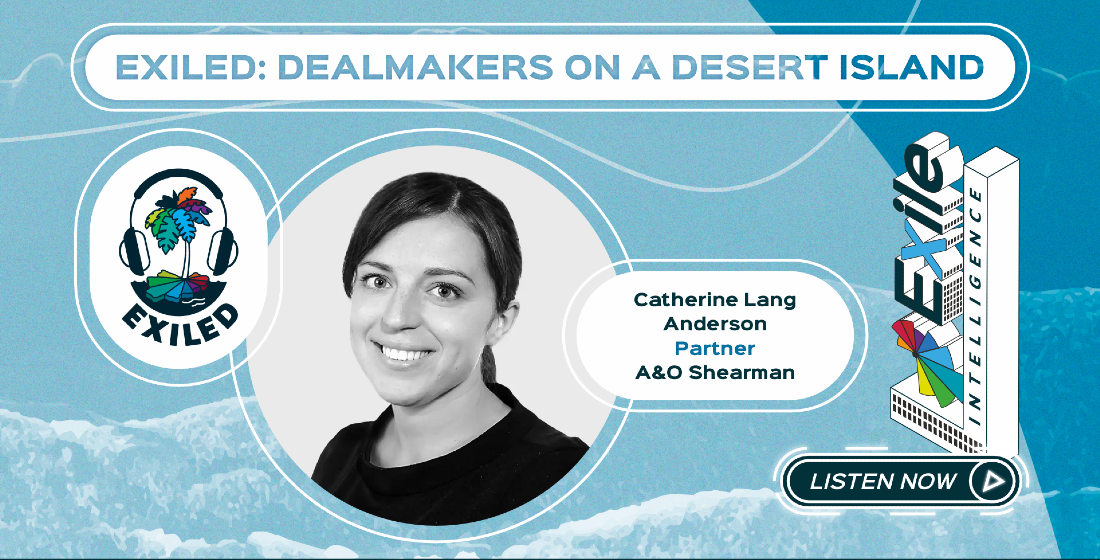Trade credit insurance: When the short term turns long (and possibly nasty)
Are we going to be looking at a whole different playing field for trade credit insurance across borders as the pandemic works itself through the financial system? Katharine Morton, head of trade, treasury & risk at TXF, investigates the potential lumps and bumps along the way ahead of TXF’s Global Trade Virtual event on 8-10 December.

Credit insurance is based upon a failure to pay. That is the failure of the buyer to pay the seller. This can be known as default. That is to say, payment is not made, but that default could be the result of temporary problems in the case of the buyer or of problems outside the buyer's control. Most obviously a buyer's failure to pay will be the result of their own insolvency, and that results in straightforward insolvency proceedings. And, in the normal course of events, there then follows a process of recovery.
In certain circumstances, however, there is a process of arrangement. This can be done in certain countries with various arrangements they call CVAs in the UK, Chapter 11 in the US and so on. The details are not important here, but what is important is that the buyer is not in a position to pay, at least not exactly under contractual terms. These things can be sorted out bilaterally. Under normal circumstances, the buyer will either go bust now or will go bust later. As Valerio Ranciaro, director general at SACE SRV points out, “And then it becomes a question of recovery (or restructuring) process, depending on the amount at stake and the nature of the financial distress of the debtor. According to the selected process (restructuring or recovery), the time before the first repayments will vary significantly.”
Not only this, the nature of restructuring also is changing. It was something limited, until recently, to insolvency specialists. Ranciaro says, “In the EU alone, the Covid-19 crisis will increase the business failure rate (starting Q4 2020/Q1 2021, depending on the individual country and on the relevant government interventions) by an average of nearly eight percentage points.” This statement is backed, among other things, by a recent estimate by the IMF (see table).
Country-Level SME Bankruptcy Rates
| Non-COVID | COVID-19 | ∆ |
Belgium | 7.75 | 14.18 | 6.42 |
Czech Republic | 8.24 | 13.59 | 5.35 |
Finland | 8.35 | 16.91 | 8.56 |
Greece | 10.43 | 16.37 | 5.94 |
Hungary | 8.22 | 14.01 | 5.79 |
Italy | 9.91 | 22.68 | 12.77 |
Poland | 11.68 | 20.45 | 8.77 |
Portugal | 12.21 | 19.65 | 7.44 |
Romania | 15.77 | 23.18 | 7.41 |
Slovak Republic | 10.41 | 16.05 | 5.64 |
Slovenia | 7.25 | 15.95 | 8.71 |
Spain | 8.98 | 15.50 | 6.52 |
Source: IMF Working Paper 20/207
“Many governments introduced a moratorium on insolvency proceedings (including court-supervised restructurings and schemes of arrangement) and execution-related proceedings (including seizures). In some countries these measures have been, or will be, extended as a second wave of the pandemic is now striking,” Ranciaro adds. “Once these measures are lifted, many corporates won’t be a going concern anymore as they will face a) reimbursements that were suspended (but accumulated) for some months, and b) the lifting of the moratoriums that were introduced by governments.”
The provision of liquidity in various forms (money, credit and whatever a banking system can provide, most often through the support of a sovereign government) will hopefully help limit some corporate failures. A sovereign government doing this internally through its banking system is one thing. A sovereign government providing support to international trade insurance is different in concept, simply because any internal domestic arrangement, most straightforwardly is on the balance sheet of that government, its Treasury, central bank and government departments.
However, in the case of international trade insurance, the insurance is extended to a foreign buyer and this is where trade credit insurance excels. And that is perhaps a euro-based supplier to a dollar-based buyer, or indeed between currencies less liquid in the international markets. But there is a difference.
What we have at the moment, therefore, is that a foreign buyer will perhaps have access to their own country's internal Covid-19 amelioration measures. That is to say, help for their own employees, working capital structures and so on, which are completely different from those in their international trade arrangements. But their international trade arrangements will typically make up anywhere from zero to, say, 50% of their buying or selling turnover.
Time matters
To come back to the abbreviated version, credit insurance protects against non-payment. That’s simple enough, but that non-payment on a due date could be the result of straightforward insolvency, which is the bankruptcy of the buyer, or it could be due to a temporary situation of financial stress.
It could be a temporary situation of illiquidity, which in itself could be due to a temporary difficulty on the part of the buyer, namely the buyer has no money or a temporary difficulty beyond the control of the buyer. That could be their sovereign country does not allow them the foreign currency or even domestic currency to enable them to fulfil their obligations. This is therefore technically a default, but does not represent bankruptcy. In the case of a technical bankruptcy, the case is straightforward. The creditors of the bankrupt must pursue in the normal way, usually through a court-administrated process, to obtain collections and recovery. However, in the case of a default which might be temporary and beyond the ability or the power of the buyer, this might be resolved in a period of, say, three months or six months or 12 months. And in the case of trade credit, where we are dealing for the most part with 30, 60, 90, 180 or perhaps 360 day credit, there really is very little difference, especially in this period of low interest rates, if we call them 60, 180 even 720 (two year) credit.
The various measures which have been adopted by governments, therefore, should be regarded on a case by case basis. That raises a challenge. It is very difficult to work out what, say, the US government might be doing through its banking system to support its industries as distinct from what, say, the UK or Germany, or any government might be doing through direct government assistance to support different sorts of industries.
And as Jonny Carruthers, director at BPL Global says, “Policyholders are potentially being ‘penalised’ for being located in countries without state support (for example Switzerland) in comparison with Germany, France or the UK. Essentially it’s the luck of the draw as to how your government has responded to the crisis. Also, nobody really knows what will happen to cover in early 2021, when the various state support schemes are due to end.”
It's therefore difficult to know and impossible to analyse the different measures which different governments have put in place to support their industries. It's even more difficult to work out when these will expire. And a normal insurance market, it might be that a policy is issued on a certain date x and expires on a certain day x plus 365 days and is reinstated on day 366.
Robert Nijhout, executive director of the International Credit Insurance & Surety Association (ICISA) says: “It is important to emphasise that schemes have not been introduced due to concerns about the financial stability of the private market. Indeed, the schemes do not benefit insurers, per se, nor are they required to address some form of disfunction in the market.”
Nijhout adds, “By linking renewals to credit insurance support schemes one should note that the schemes are aimed at whole-turnover policies, which are by far the largest trade credit insurance segment. These policies cover average credit terms of three to six months and up to 12 months so the risk tail is limited.”
The objective of these [government support] schemes is to enhance the credit quality of a buyer so that a credit limit can be maintained. Nijhout points out: “Policies have hundreds and sometimes thousands of credit limits on a revolving basis which can be cancelled by the underwriter for new deliveries if the information on that buyer is negative or worse. This is what these schemes aim to avoid during the pandemic.”
It’s important to note, as Nijhout says, that buyers may or may not be subject to state support. Some are not affected by the pandemic while others even benefit from it. And many buyers are in countries without a support scheme so the risk outlook is not dependent on these. “So on a policy level the outlook differs widely. Schemes neither address the single situation market nor non-cancellable limits. Most schemes were negotiated by the private trade credit insurers and the government and therefore focus on the majority of their business, namely, the whole-turnover segment.”
All of this does not apply to other government support measures, of course, which can also affect risks, such as the suspension of insolvency legislation in some countries.
Governments have no understanding of time as it is normally understood in the financial world, and therefore can institute emergency measures at any time through 365 days, as they wish. And because they are instituting crisis measures according to domestic lobbying, there may be x number of different measures over that period. When these measures expire is irrelevant to international credit insurance, but it will have an impact upon the claims record thereafter so that when the government measure to support credit insurance expires, there could still be a long tail. Most insurance policies in many developed markets run in a calendar year and renew in January. That’s going to be interesting to see both from buyers’ and sellers’ perspectives.
When we speak of long tails, when we speak of long and large exposures, we have traditionally been thinking in terms of the export credit sector that is not just long, but very long and not just large, but very large. The long and large that was such a problem in the reinsurance sector will now find itself to be a problem in the short term credit insurance sector that there will be, instead of short and small little, big bumps, there will now be long, big, huge, large. Not bumps, but summits.
Now time to get up to speed with the markets
Here's a selection of original TXF Subscriber articles recently published
Russian corporates: Squeezing out pricing premiums
Russia’s syndicated loan market activity is set to boon at the beginning of 2021, according to sources, as corporates delay their Q4 2020 fundraising plans to avoid any lingering ‘Covid premiums’ in anticipation of more favourable pricing conditions early next year.
IFC invites EoIs for Nigerian solar PV scheme
The IFC and the Nigeria Sovereign International Authority (NSIA) have invited expressions of interest from consultancy firms for legal advisory services on a 60MW solar PV scheme. Responses are due 30 November this year.
ACWA-led team mandates banks for TRSDC
An ACWA Power/Energy China team has mandated banks on a $1.3 billion loan to finance the utilities piece of The Red Sea Development Company’s (TRSDC) tourism Red Sea giga-project in Saudi Arabia. Financial close is expected at the beginning of 2021.
Export financing arm of Ferrostaal Equipment bought by Jebsen & Jessen
Ferrostaal Trading, a German industrial service group and majority-owned subsidiary of MPC Münchmeyer Petersen (MPC), has sold the transportation and export financing activities of Ferrostaal Equipment Solutions as well as the steel trading activities of Ferrostaal Metals to Jebsen & Jessen.
Equinor mandates lead bank on Empire Wind project
Norwegian energy company Equinor has mandated Societe Generale for the financing of its 816MW Empire Wind offshore wind project in New York.
Yanbu 4 IWP nears signing
Joint sponsors of the Yanbu 4 IWP project in Saudi Arabia - Engie and Mowah - are expected to sign the debt package backing the $850 million scheme next week.
DEWA names PB for Hassyan IWP
Financial close on the Hassyan independent water project (IWP) in Dubai is expected in H1 2021, after Dubai Water & Electricity Authority (DEWA) announced a Utico-led consortium as the preferred bidder this week.
Ethiopia launches RFP for telecom tenders
Ethiopia has issued RFPs for two telecoms licenses, with the deadline for bids set for 5 March 2021. However, the deadline to show an interest in receiving the RFP documents is 10 December.
Braes Bayou peaker financing signed
Braes Bayou Generating – a special purpose company owned by Wattbridge Energy, which is itself owned by ProEnergy – has signed on a $153.17 million debt facility to finance its 288MW simple cycle gas-fired peaker power project in the ERCOT Houston Zone in Fort Bend County, Texas.





